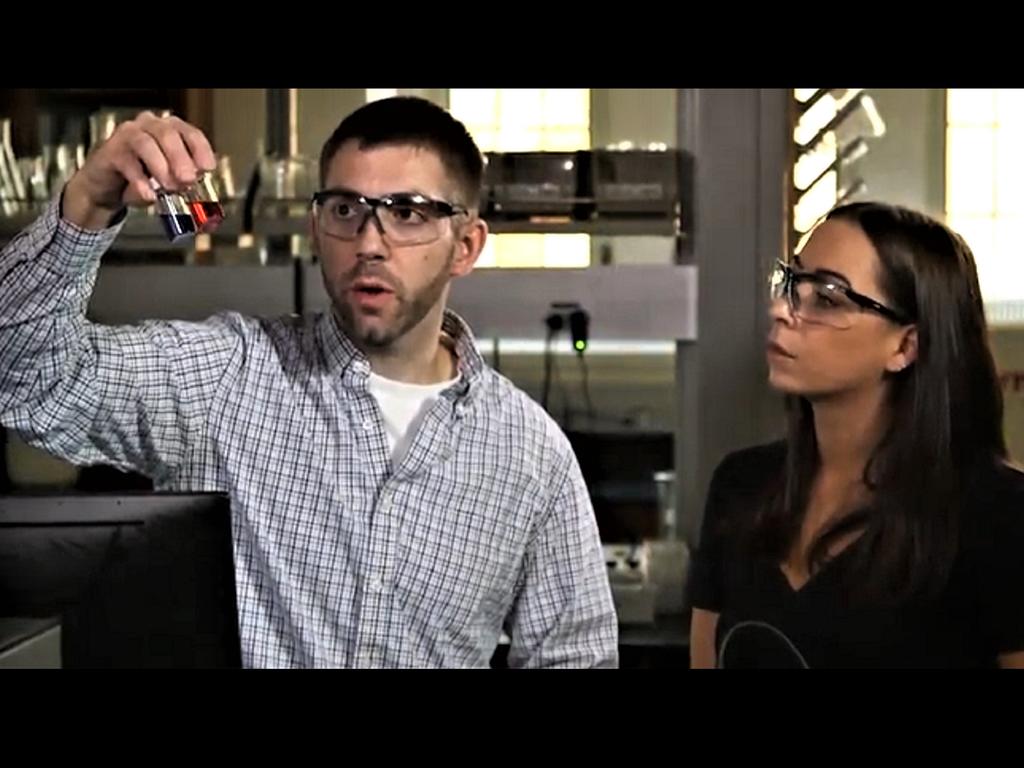Dr. Will Eckenhoff, assistant professor of chemistry, and his team of undergraduate researchers have published work in the journal Inorganic Chemistry. The research has potential applications in the production and performance of dye-sensitized solar cells, which can contribute to renewable energy.
The Rhodes group has been investigating solvatochromism, a process that occurs when a chemical compound is dissolved in solvents and emits different colors based on the way the solvent molecules interact with the compound of interest. “In this case, the compound is a molybdenum(III) complex, which at first glance, doesn’t appear to be very special, until you try to dissolve it in different solvents,” says Eckenhoff. “This contrasts with many metal complexes that give practically the same color in different solvents.”
Students Sarah Helland ’21, Alison Chang ’18, Keren Lee ’20, and Phillips Hutchison ’19 contributed to the article in Inorganic Chemistry titled “Synthesis and Characterization of Strongly Solvatochromic Molybdenum (III) Complexes.” University of Rochester scientist and X-ray crystallographer William Brennessel also assisted with the research by analyzing single crystals grown by the Rhodes College students with X-ray diffraction to determine their molecular structures.
“The publication includes many novel compounds with previously unknown intense solvatochromism, changing color from yellow in water, red in methanol, purple in acetonitrile, and blue in acetone,” says Eckenhoff. “The team also took the research a step further using computational modelling to investigate the electronic structure of these interesting complexes.”
Chang began working on this project in her junior year, synthesizing several of the initial compounds and getting the computational analysis started before heading off to graduate school at University of Oregon. Hutchison finished the computational analysis before going to Yale University for graduate school, hoping to further his skills in the area of computational chemistry. Lee and Helland both contributed significantly toward the synthesis and analysis of the compounds presented in the work.
“This has been a real team effort, and we couldn’t be more pleased with the outcome,” says Eckenhoff, who plans to continue the research in this area, as well as explore collaborations to find potential applications in the areas of dye-sensitized solar cells and possibly even biological systems.
View the article here.
